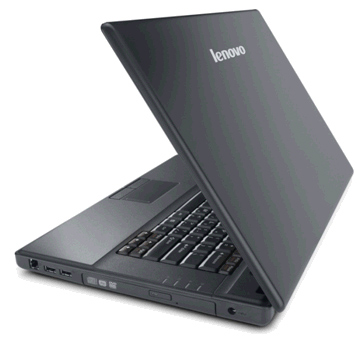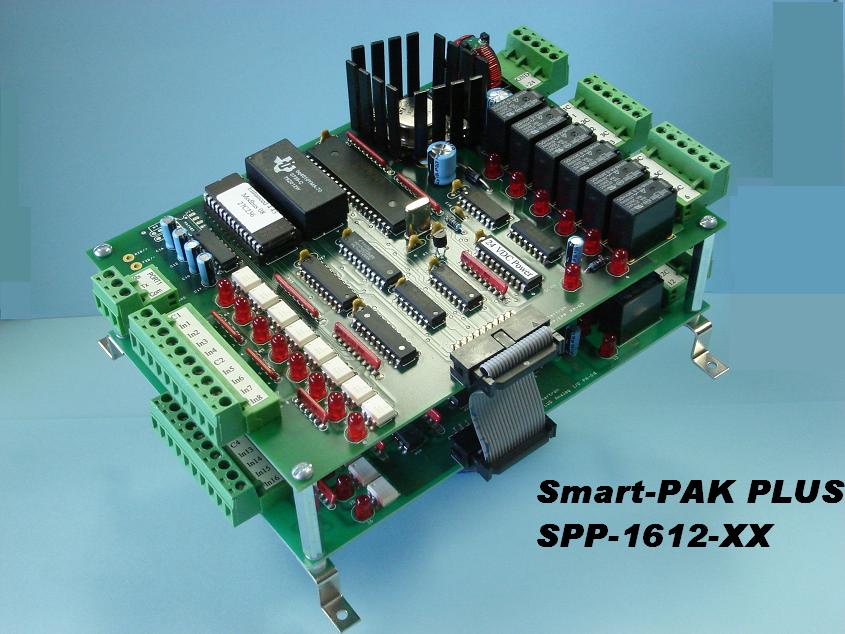

Everything is under CONTROL




We’ve seen plenty of gaming notebooks that are meant to dazzle potential customers with outrageous designs, ultra high-resolution displays, twin GPUs, and quad-core processors. The MSI GT627-216US isn’t such a notebook. Instead, the GT627-216US takes a more subdued approach to offer budget-minded gamers a powerful machine at an affordable price.
Although the MSI GT627-216US may take a budget-minded approach, it doesn’t skimp on what’s important to gamers, namely the graphics card. The NVIDIA GeForce 9800M GS at the heart of this notebook helps it to produce more than respectable scores in many gaming benchmarks. In addition, the GT627-216US has an Intel Core 2 
Available for under $1,200, the GT627 employs the increasingly popular (and durable) brushed metallic look and adds red accents that give the notebook a bit of flare. Because it uses a 15.4-inch widescreen display as opposed to the 17-inch displays seen on many gaming notebooks, the overall machine is also lighter than its larger competitors. There’s a tradeoff, however, since a smaller display also means resolution sacrifices, and the GT627 is not immune to this. With a native resolution of 1280 x 800, you’ll definitely miss some of the detail you’d enjoy with a larger gaming notebook.
Read on as we take a closer look at the design and features of the GT627-216US. We’ll also run the GT627-216US through a rigorous set of benchmarks to see just how well it compares to some other gaming notebooks




The ATmega128 is a low-power CMOS 8-bit microcontroller based on the AVR enhanced RISC architecture. By executing powerful instructions in a single clock cycle, the ATmega128 achieves throughputs approaching 1 MIPS per MHz allowing the system designer to optimize power consumption versus processing speed. The ATmega128-16AU is the Pb-free version of the ATmega128-16AI. It is functionally identical.
|
This practical course for Atmel microcontrollers is developed with the intention to make everything available in one product. This kit is a combination of Experimenter Board hardware, In-System Programmer and AVR Tutorial course software with graphics and audio. The tutorials cover the Embedded C programming for AVR microcontrollers and Assembler Programming for 8051 microcontrollers. The tutorials also teach you interface techniques for 89S52 and AVR microcontrollers - sample source code for interfacing to the various on-board peripherals is included. Note: The picture on the right shows the kit with a serial RS232 cable, but such a cable is not included. To connect this board to your PC and program the microcontroller you need a 9-pin SUB-D male to female, straight through serial cable. If you do not have such a cable you can order one as an add-on option at the bottom of this page. Note: This kit ships with a 40-pin AT89S52 microcontroller included; it does not include any AVR microcontrollers. If you want to use this kit to learn AVR programming, you can order an optional ATmega16 microcontroller from the add-on option section at the bottom of this page. The practical course for Atmel microcontrollers comes with a CD-ROM containing development software and audio-visual tutorial software that explains the concepts of developing software in Embedded C for AVR microcontrollers. An 89S52 Assembler tutorial document covers code development for 8051 microcontrollers. The board supports Atmel AVR and AT89S51, AT89S52 (8051 family) microcontrollers. All necessary development software is included. An integrated, serial port In-System Programmer allows you to download code directly from your PC to the board. You can connect any of the on-board peripherals, like LCD, 7-Segment LED, sensors or switches to any desired port of the microcontroller via the included cable set. |
This is the ideal training and development board for Atmel AVR microcontrollers. The board has both ISP programmer (STK500 compatible) and JTAG in-circuit debugger (JTAGICE compatible) circuitry integrated(!), so you can save the expense of buying any additional tools. Both ISP and JTAG connect to a PC's serial port. On the PC, use Atmel's free AVR Studio IDE software to debug and upload your code to this board. The ATmega128 microcontroller sits on a separate, r |
 |  |
The Smart-PAK was first introduced in 1991, Entertron's first micro PLC. It started off as an inexpensive way to replace a handful of relays, timers and counters. That was more than sufficent when we first introduced the Smart-PAK. As applications became more and more sophisticated, customers began asking for analog capabilites for pressure transducers, variable frequency drives, etc... To address that need, in 1996, Entertron introduced the Smart-PAK PLUS, the industries first micro PLC with 12 bit analog. We started off with capabilities for up to 2 analog inputs and 2 analog outputs.
In addition to the analog capabilities, we made the Smart-PAK PLUS more robust by incorporating 7 amp relay outputs, a second serial port option, networking capabilities. The Micro has morphed from just a simple relay replacer to a sophisticated process device.
We didn't stop with what we had. A customer came to us in 1998 and asked for temperature capabilities. The result of our collaboration was an analog expansion board with capabilities found only in modular systems. The analog expansion board can be configured for up to 8 analog inputs / 4 analog outputs. Of the 8 analog inputs, 4 can be configured as either Type K thermocouples or RTDs. Our competitor's versions typically limit you to one or two temperature inputs. You are only now starting to see this capability in micros.
The Smart-PAK and Smart-PAK PLUS are both leaders when it comes to price and performance. You will see more and more micro PLCs come to market, but none with the capabilities of Entertron's offerings.
Entertron was the first manufacturer to offer a PLC that would run on 12 VDC. Typically used in mobile applications. PLCs are not just used in machinery anymore. We have been on Ambulances, Parade Floats and Battery Powered Air Compressors to name just a few.


Highlights
The ability to integrate powerful CPUs with Industrial Ethernet/PROFINET interface, integrated technological functions, or fail-safe designs make additional investments unnecessary.
The S7-300 can be set up in a modular configuration without the need for slot rules for I/O modules. There is a wide range of modules available both for the centralized and the distributed configuration with ET 200M.
The Micro Memory Card as a data and program memory makes a backup battery superfluous, and with it, part of the maintenance costs. In addition, an associated project, including symbols and comments, can be stored on this memory card to facilitate service calls.
The Micro Memory Card also enables simple program or firmware updates. The Micro Memory Card can be used during operation for storing and accessing data, e.g. for measured value archiving or recipe processing.
In addition to standard automation, safety technology and motion control can also be integrated in an S7-300.
Many of the S7-300 components are also available in a SIPLUS version for external environmental conditions, e.g. extended temperature range (-25...+60 ¡ãC) and for use where there is aggressive atmosphere/condensation.
 automation tasks
automation tasks  The Power Controller for system solutions in the manufacturing and process industries Within the Controller family, the SIMATIC S7-400 is designed for system solutions in the manufacturing and process automation. The product range comprises 9 Standard CPUs, 2 failsafe and 2 high available CPUs. The following features make the SIMATIC S7-400 the most powerful Simatic PLC: The S7-400 is especially suitable for data-intensive tasks in the process industry. High processing speeds and deterministic response times guarantee short machine cycle times on highspeed machines in the manufacturing industry. The highspeed backplane bus of S7-400 ensures efficient linking of central I/O modules. The S7-400 is used preferably to coordinate overall plants and to control lower-level communications lines with slave stations; this is guaranteed by the high communication power and the integral interfaces. The power of the S7-400 is scalable thanks to a graded range of CPUs; the capacity for I/O is almost unlimited. The power reserves of the CPUs enable new functions to be integrated without further hardware investment, e.g. processing of quality data, user-friendly diagnosis, integration into higher-level MES solutions or high-speed communication via bus systems. The S7-400 can be structured in a modular way without any slot rules; there is a widely varied range of modules available both for centralized configurations and distributed structures. The configuration of the distribuded I/O of the S7-400 can be modified during operation. In addition signal modules can be removed and inserted while live (hot swapping). This makes it very easy to expand the system or replace modules in the event of a fault. The storage of the complete project data including symbols and comments on the CPU simplifies service and maintenance calls Safety technology and standard automation can be integrated into an S7-400 controller; the plant availability can be increased by the redundant set-up of the S7-400. Many of the S7-400 components are also available in a SIPLUS version for external environmental conditions, e.g. extended temperature range (-25?+60¡ãC) and for use where there is aggressive atmosphere/condensation. |
| |


GE Fanuc’s Series 90-70 PLC provi des a comprehensive solution that is equal to the most demanding applications. With our CPX family of CPUs, the Series 90-70 offers more for your automation dollar–more computing power, more memory for your applications, and more communications and redundancy capabilities. And with a wide range of isolated and high-density VME analog I/O modules, the Series 90-70 provides even more flexibility for a variety of applications.
des a comprehensive solution that is equal to the most demanding applications. With our CPX family of CPUs, the Series 90-70 offers more for your automation dollar–more computing power, more memory for your applications, and more communications and redundancy capabilities. And with a wide range of isolated and high-density VME analog I/O modules, the Series 90-70 provides even more flexibility for a variety of applications.
The Series 90-70 Features

The Series 90-30 PLCs are a family of controllers, I/O systems and specialty modules designed to meet the demand for versatile industrial solutions. With a single overall control architecture and modular design, the Series 90-30 has been the PLC of record in over 200,000 applications, such as high speed packaging, material handling, complex motion control, water treatment, continuous emissions monitoring, mining, food processing, elevator control, injection molding, and many more.
One reason for the versatility of the Series 90-30 is the large variety of discrete and analog I/O modules (over 100 modules), as well as specialty modules, that are available. In addition, GE Fanuc offers a wide range of high-level communication options, from a simple serial connection to a high-speed Ethernet interface and a number of bus modules.